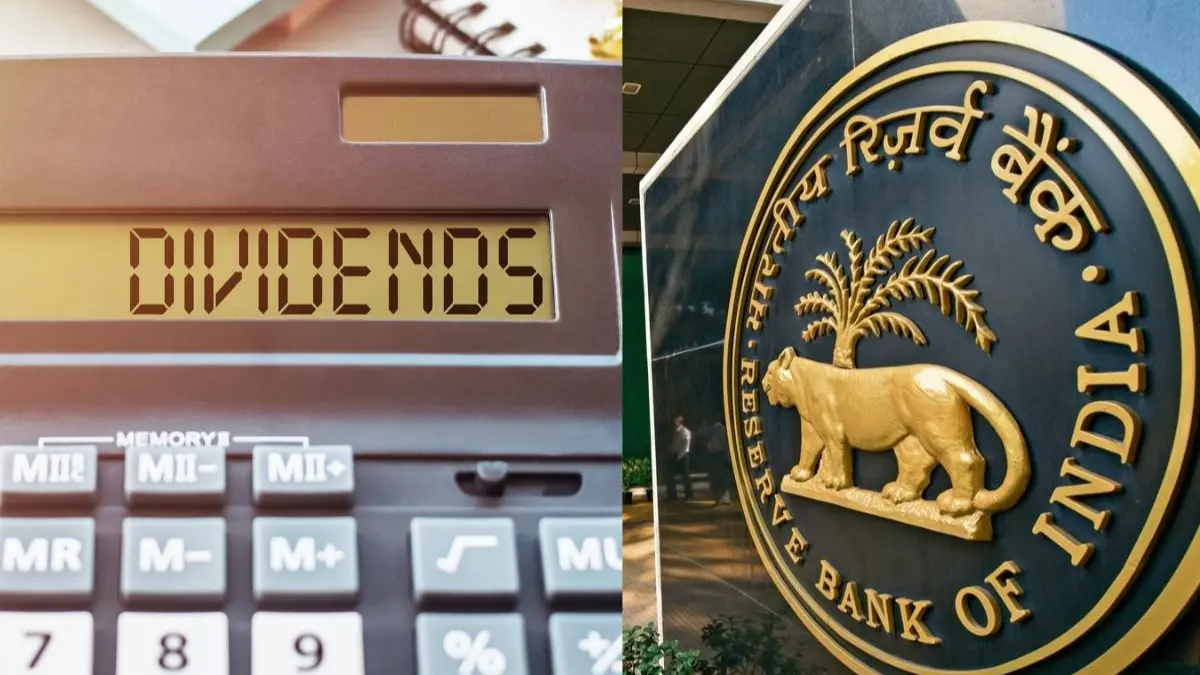Updated 24 May 2025 at 10:58 IST
RBI Dividend 2025 Explained: What, Why, And How It Impacts India’s Economy
The Reserve Bank of India’s record-breaking Rs 2.69 lakh crore dividend to the government is driven by aggressive dollar sales, rising foreign exchange gains, and increased interest income, according to an SBI report.
- Republic Business
- 3 min read

The Reserve Bank of India (RBI) has announced a record dividend of Rs 2.68 lakh crore for the central government for FY25. That’s significantly higher than the Rs 2.1 lakh crore the government had expected in its budget. Though it’s below Emkay Global’s estimate of Rs 3.2 lakh crore, it’s still a meaningful surprise.
Why is the dividend important?
This is the third straight year that the RBI has given more than what was budgeted. Last year, the actual dividend was 2.6 times higher than the government’s expectation. This year, the surprise is more modest, but still translates to an extra 0.15% of GDP in government funds.
Where did this money come from?
Emkay Global attributes the bumper dividend to three key factors:
Higher foreign exchange (FX) sales: The RBI sold about $398 billion in FY25 (versus $153 billion in FY24), which boosted its forex income.
Higher interest from G-secs: The RBI earned more by holding and investing in government securities.
Lower asset revaluation losses: Gains on its foreign and domestic holdings meant the RBI had to set aside less for losses.
These income sources allowed the RBI to increase its Contingent Risk Buffer (CRB) — an emergency reserve — to 7.5% of its balance sheet, up from 6.5% earlier.
Read More
Bank Holiday Today: Is Your Branch Open On May 24, 2025?
What does this mean for the government’s finances?
While the extra Rs 58,000 crore will help, Emkay doesn’t expect any major shift in the government’s fiscal math. The money will likely offset weaker tax revenues and slower GDP growth, helping the government stick to its fiscal deficit target of 4.4% of GDP for FY26.
What about liquidity in the banking system?
This dividend also means more money in the banking system. Emkay estimates that liquidity could reach $4–4.5 trillion in Q1 FY26, helped by:
The high RBI dividend
Seasonal dip in currency circulation
RBI’s open market operations (OMOs)
Liquidity may reduce later in the year, but is expected to end FY26 in a surplus of around 0.9–1.1% of Net Demand and Time Liabilities (NDTL).
Will this impact interest rates?
Despite this liquidity surge, Emkay believes the RBI will still go ahead with a rate cut in June. It expects the terminal policy rate to settle at 5.25% (+/-0.25%), and the 10-year bond yield to ease to 6.0% by the end of 2025.
“Improving transmission tools should help in better real sector percolation,” Emkay said in its May 22 note titled Macro Strategy: Liquidity Matters.
Bottom line
The RBI’s record dividend gives the government a modest fiscal cushion and temporarily floods the banking system with liquidity, without derailing the path to interest rate cuts. The big picture? It gives the Centre some breathing room in a year where tax revenues and growth may underperform.
Advertisement
Published By : Gunjan Rajput
Published On: 24 May 2025 at 10:51 IST
